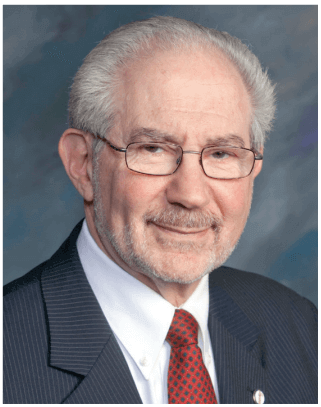THERE'S A NEW RULE IN TOWN – WHAT WILL YOU DO ABOUT IT?
Posted on Feb 19, 2018 |Publications

By: Hon. Ira B. Warshawsky, J.S.C. (Ret.)
February 2018
“Come gather ‘round people
Wherever you roam
And admit that the waters
Around you have grown
And accept it that soon
You'll be drenched to the bone
If your time to you is worth savin'
Then you better start swimmin' or you'll sink like a stone
For the times they are a-changin'”
The Times They Are a-Changin', Bob Dylan ©1963, 1964
As of January 1, 2018, Commercial Division Rule 10 was amended. The rule, innocuous on its face, specifies what information an attorney must supply at a preliminary conference. The amendment is entitled “Certification Relating to Alternative Dispute Resolution.” It states:
“Counsel for each party shall also submit to the court at the preliminary conference and each subsequent compliance or status conference, and separately serve and file, a statement, in a form prescribed by the Office of Court Administration, certifying that counsel has discussed with the party the availability of alternative dispute resolution mechanisms provided by the Commercial Division and/or private ADR providers, and stating whether the party is presently willing to pursue mediation at some point during the litigation.”
Thus, from the first time your case enters the judicial system, you will be required to make the above disclosure. In addition, based upon the above language, you are “certifying” that you have done as requested by the Commercial Division Rules.
This does become a bit more complex because Rule 11 was also modified. Rule 11 Discovery, is a multipart rule to begin with, and now will contain new areas that will interact with the Commercial Division's Advisory Council's desire to motivate parties toward Alternative Dispute Resolution, and most specifically to mediation. Rule 11 (a), set forth below, contains what might be called the enforcement elements of Rule 10.
Rule 11. Discovery
(a) The preliminary conference will result in the issuance by the court of a preliminary conference order. Where appropriate, the order will contain specific provisions for means of early disposition of the case, such as (i) directions for submission to the alternative dispute resolution program, including, in all cases in which the parties certify their willingness to pursue mediation pursuant to Rule 10, provision of a specific date by which a mediator shall be identified by the parties for assistance with resolution of the action; (ii) a schedule of limited-issue discovery in aid of early dispositive motions or settlement; and/or (iii) a schedule for dispositive motions before disclosure or after limited-issue disclosure. [Underlined portion is new]
While serving on the bench, I recognized the difficulty that some lawyers might have suggesting mediation to their clients or to their adversary (a sign of weakness?). Thus, I always informed them that they could tell their clients the judge recommended mediation. If necessary, I would meet with the parties and their lawyers at the same time and explain that it was the Judge's decision to move forward with mediation to save them time and money. My philosophy was echoed by comments from Marc Zauderer, a member of the Advisory Council, in an article published in the New York Law Journal (New Commercial Division Rule Amendments Emphasize Use of ADR, October 17, 2017). The rule takes the onus of suggesting mediation off the backs of the attorneys and places it squarely on the rules.
It is clear that the goal of the Advisory Council is to make the Commercial Division of New York State the location for domestic and international corporations to resolve disputes. Changes such as the ones we've seen in the area of ADR within the Commercial Division, if followed affirmatively and with transparency, will tend to speed the disposition of cases.
If you've read this article and don't usually have cases in the Commercial Division, you may find Rule 10 meaningless to your practice, but be aware that rules that start in such divisions of the Supreme Court as the matrimonial area or in this case the Commercial Division, frequently have a habit of working their way into general Supreme Court practice via the Rules of the Chief Judge.
I would urge commercial litigators to give heed to this new rule and make ADR a part of your attorney-client discussion on a regular basis.
Over a dozen years ago, I attended a meeting at a local Bar Association for its commercial litigation committee. The room was packed with perhaps 80 people in attendance representing small, as well as medium and large law firms. The topic was the future of ADR in commercial litigation. The Administrative Judge inquired of the attendees how many of them would consider reaching out to a mediator to assist in one of their matters, and only one person raised their hand. An active discussion ensued, covering reasons that militate against mediation such as, showing weakness to your adversary, showing weakness to your client, and indicating to the judge before whom the case was pending that you had no confidence in your own case.
Today I know (or hope) the vote would be dramatically different.
“For the times they are a-changin' ”
_________________________________________
Hon. Ira B. Warshawsky, is a retired Justice of the Supreme Court, Nassau County, Commercial Division. He is a member of NAM's (National Arbitration and Mediation) Hearing Officer Panel and is available nationwide for arbitrations and mediations. For the third year, he was voted a Top Ten Arbitrator in the 2016 New York Law Journal Reader Rankings Annual Survey and was also named a National Law Journal 2016 Alternative Dispute Resolution Champion, as part of a select group of only 48 nationwide. Judge Warshawsky is Of Counsel to Meyer, Suozzi, English & Klein, P.C., in Garden City, NY.
For any questions or comments, please contact Jacqueline I. Silvey, Esq. / NAM General Counsel, via email at jsilvey@namadr.com or direct dial telephone at 516-941-3228.
“